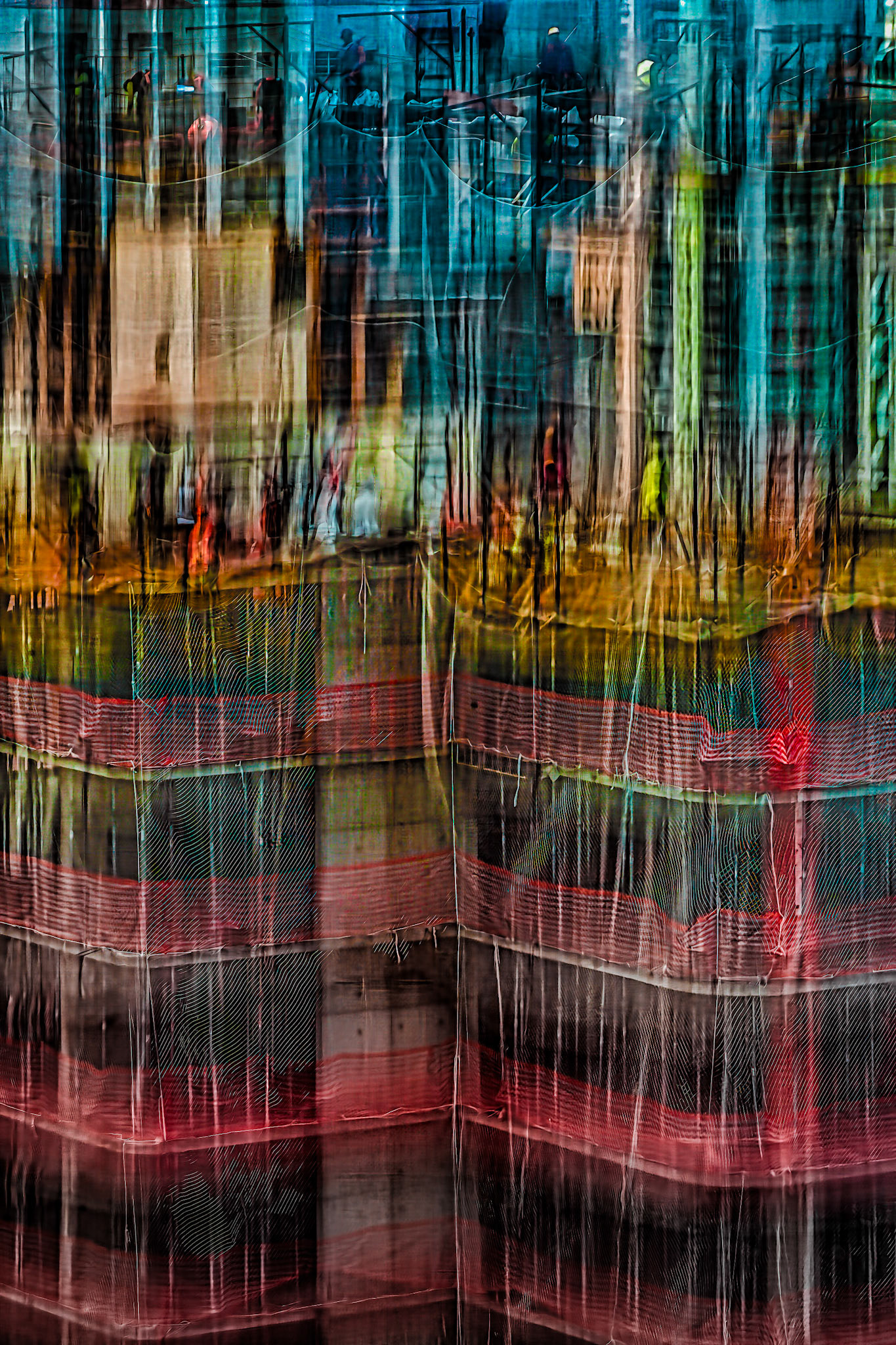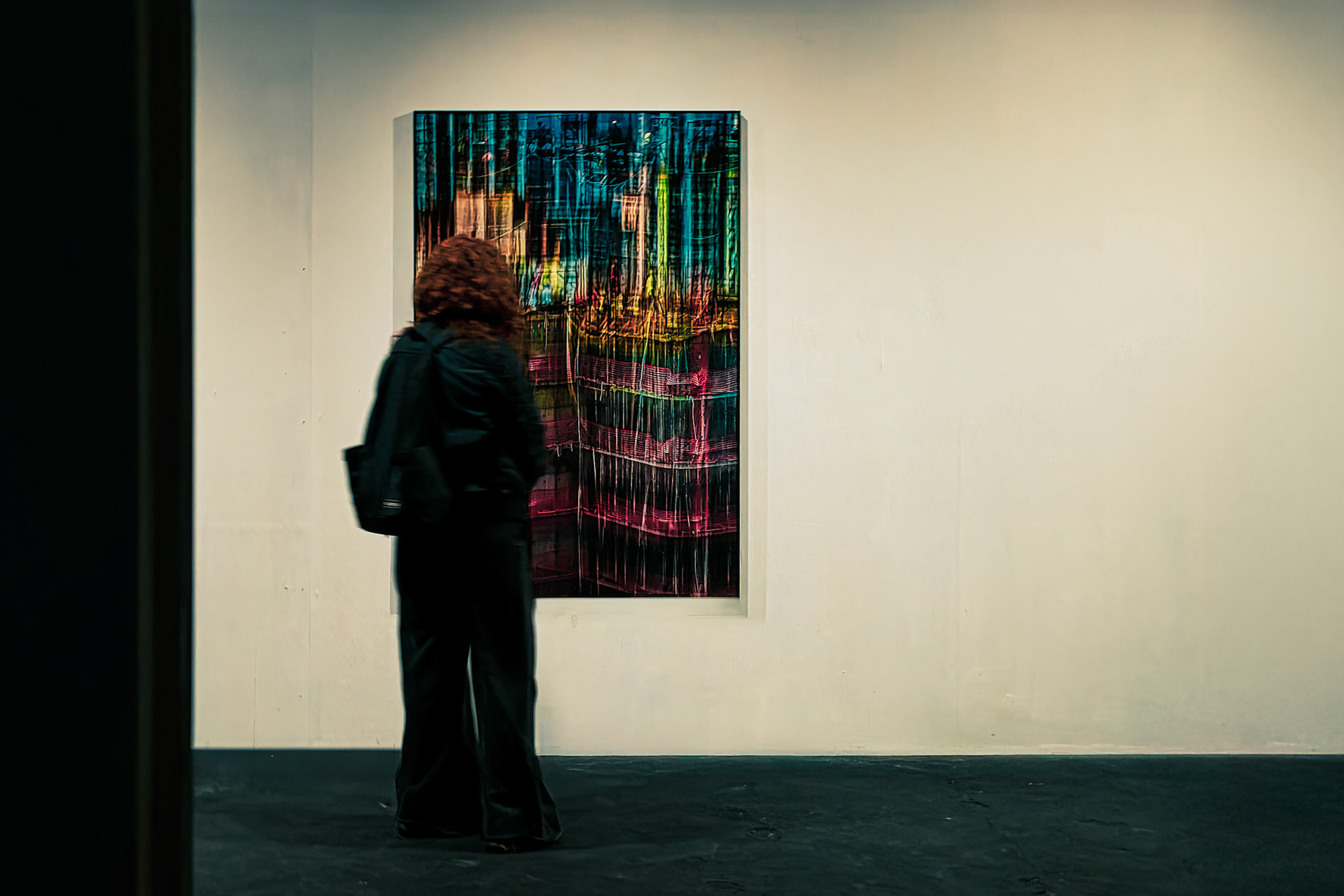

Standing Reserve
En el corazón de la ciudad moderna, donde la luz se difumina en el hormigón y el acero se funde con el cielo, se desvanecen las líneas entre creación y consumo. La fotografía, acertadamente titulada Reserva Permanente, encarna la esencia del mundo tecnológico según lo describió Martin Heidegger. A través de las formas abstractas y la geometría fracturada, somos testigos del paisaje urbano transformado en un recurso—en espera, disponible y listo para su extracción.
Las estructuras imponentes, borrosas y distorsionadas, ya no se alzan como símbolos del logro humano sino como mercancías—elementos de la reserva permanente, siempre a mano, siempre listos para ser utilizados. Hacen eco de la advertencia de Heidegger: que en la era de la tecnología, incluso las creaciones humanas más íntimas, nuestras ciudades, se convierten en mero inventario—despojadas de su esencia, reducidas a energía potencial al servicio del progreso.
La luz, también, se convierte en parte de esta reserva. El resplandor vibrante, casi eléctrico, que domina la escena es tanto vivificante como inquietante. Estos rayos de iluminación sugieren una actividad incesante, el zumbido de la industria, el suministro interminable de energía que impulsa la maquinaria invisible de la ciudad. Sin embargo, el resplandor es abstracto, intangible—un recordatorio de que el mundo de la reserva permanente no es algo que tocamos o sentimos, sino algo que gestionamos y controlamos a distancia.
¿Dónde está lo humano en todo esto? La presencia humana está notablemente ausente, o quizás, oculta bajo capas de abstracción, oscurecida por las mismas fuerzas que ha puesto en movimiento. La ciudad se ha convertido en una extensión de nuestra voluntad, pero paradójicamente, ya no es verdaderamente nuestra. En el frenético desenfoque de movimiento y hormigón, hemos perdido nuestra conexión con la esencia de las cosas, con el Ser mismo. La fotografía nos invita a hacer una pausa, a reflexionar sobre esta desconexión—¿estamos verdaderamente habitando aquí, o somos meramente participantes en un sistema que reduce tanto la naturaleza como la vida humana para alimentar su apetito insaciable?
Reserva Permanente es una meditación visual sobre la alienación y la abstracción. Las formas que vemos no son solo edificios o luz—son un testimonio de nuestra rendición colectiva ante el modo tecnológico de ser. La imagen deconstruye estructuras familiares, obligándonos a enfrentar la incómoda realidad de que el mundo que nos rodea ya no es un entorno para vivir sino una red de recursos para explotar.
Pero entre las líneas fracturadas y los bordes difuminados, permanece un atisbo de belleza—un momento fugaz donde la luz baila y el color emerge del gris. Es en estos momentos que recordamos la posibilidad de otra forma de ser, una que Heidegger describe como habitar, donde los humanos existen no como amos de los recursos sino como guardianes del mundo, coexistiendo con sus ritmos, respetando sus límites.
En Reserva Permanente, se nos pide mirar más de cerca, ver más allá de la superficie y cuestionar nuestro papel en el mundo tecnológico. ¿Es este el futuro que deseamos habitar—uno donde todo es un recurso, incluso nosotros mismos? ¿O podemos encontrar una manera de habitar significativamente dentro de él, reconectando con la esencia de las cosas antes de que se desvanezcan en la borrosidad de la modernidad?